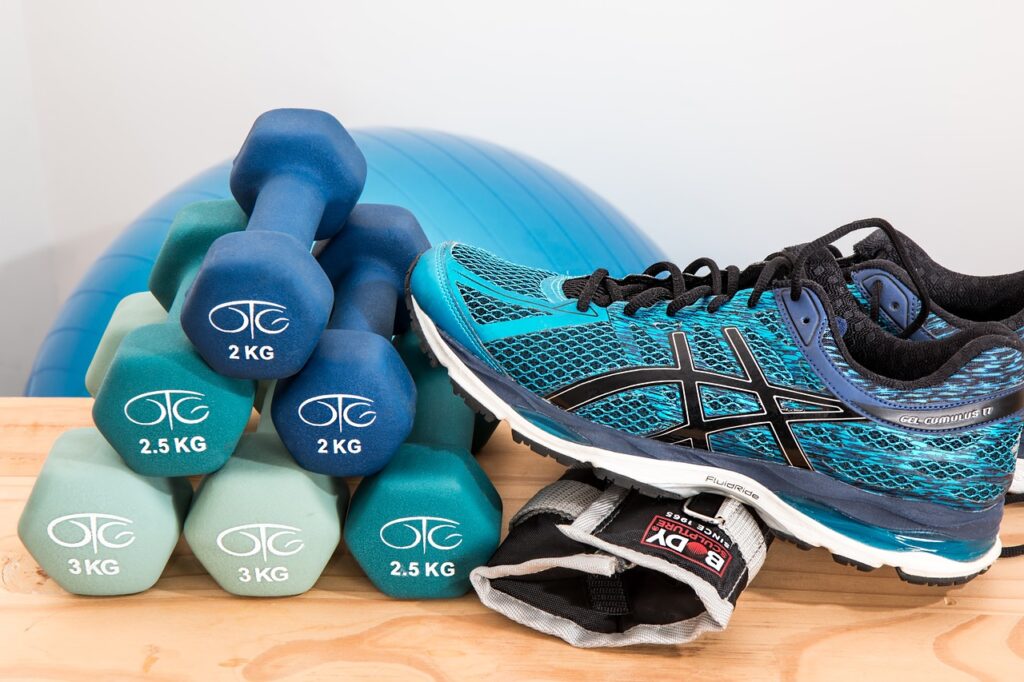<p>Making the wrong choice is detrimental when it comes to athletic shoes as this can trigger injuries and hinder performance. To ensure you experience neither, here are a few important pointers to picking out the right fit quite literally:</p>
<ul>
<li>Consult the staff of the speciality store you are purchasing at because they usually have excellent insight as to proper fitting and matching of sports with the right shoes.</li>
<li>Shoes ought to feel comfortable on the first fit; you shouldn’t need to waggle your foot in.</li>
<li>Also be sure to test the shoes out with a slight run or walk; they should still feel comfortable.</li>
<li>The heel grip also needs to be moderately firm.</li>
<li>Don&#8217;t forget to re-lace the shoes to get a feel of how the pressure distributes across the surface in a crisscrossing style.</li>
<li>Being able to freely wiggle your toes whilst wearing the shoe is as well a good measure of the right choice.</li>
<li>If you are regularly involved in sports, you might want to consider a specific shoe variety. Once you clock 300 hours of aerobics or about 300 to 500 running miles, then it’s time to get a new pair.</li>
</ul>
<h2>How to analyze shoe varieties</h2>
<p>These days shoes are produced almost by the hour which means that the market is flooded with thousands of products. So how do you make the right choice in this endless sea of options? The following tips should give you some idea:</p>
<h2>Running shoes</h2>
<figure id="attachment_1280" aria-describedby="caption-attachment-1280" style="width: 640px" class="wp-caption aligncenter"><img class="wp-image-1280 size-full" src="https://incrediblemag.com/wp-content/uploads/2018/08/running-2558673_640.jpg" alt="Running shoes" width="640" height="426" /><figcaption id="caption-attachment-1280" class="wp-caption-text">Image source: Pixabay</figcaption></figure>
<p>For overall running shoes, either cushioned or non-cushioned varieties would do. For joggers, on the other hand, a good type would be one with good heel balance and adequate cushioning which helps protect against impact shocks and associated injuries.</p>
<h2>Walking shoes</h2>
<figure id="attachment_1278" aria-describedby="caption-attachment-1278" style="width: 640px" class="wp-caption aligncenter"><img class="wp-image-1278 size-full" src="https://incrediblemag.com/wp-content/uploads/2018/08/footwear-843862_640.jpg" alt="Tenisice" width="640" height="480" /><figcaption id="caption-attachment-1278" class="wp-caption-text">Image source: infashionshop.hr</figcaption></figure>
<p>A good walking shoe ought to incorporate added impact cushions around the metatarsal region (the round ball at the base of your leg) and around the heel area so as to minimize pain and itchiness. Moreover, the front needs to be more rigid than those of running shoes and the sole should be a bit rounder or firmer to enable the seamless transition of weight between the toes and heel while keeping overall stress at a minimum.</p>
<h2>Aerobic shoes</h2>
<p>These kinds ought to have added cushioning below the sole to protect the most affected regions pressure wise while the overall weight should feel light in the hand.</p>
<h2>Tennis shoes</h2>
<p>Racquet sports such as tennis require shoes with excellent flexibility to allow for quick sidewise weight changes and such shoes should also be easy on the metatarsal. Go for a more threaded design on hard courts but a softer soled model on softer grounds as they afford better traction in such scenarios.</p>
<h2>Basketball shoes</h2>
<figure id="attachment_1279" aria-describedby="caption-attachment-1279" style="width: 640px" class="wp-caption aligncenter"><img class="wp-image-1279 size-full" src="https://incrediblemag.com/wp-content/uploads/2018/08/shoes-1011596_640.jpg" alt="Basketball shoes" width="640" height="427" /><figcaption id="caption-attachment-1279" class="wp-caption-text">Image source: Pixabay</figcaption></figure>
<p>If you are an avid basketball player, a succulent, firm sole is what you should be looking for as it provides great stability for such high-paced action. High top shoes are also great in this regard but do not guarantee protection from ankle and other injuries.</p>
<h2>Cross trainers</h2>
<p>The general rule of thumb for cross trainers is good forefoot flexibility complimented by excellent lateral control for tennis or aerobics.</p>
<h2>Parting shot</h2>
<p>We’ve taken a look at a number of popular varieties but this doesn’t mean that you need to get a different shoe for every purpose. Basically get sport-specific shoes for the activity you frequently participate in (three or more times in seven days is a good measure of frequency). If you are struggling with certain complications, then you might require a special shoe tailor-made to alleviate your specific condition.</p>

How to Select the Right Athletic Shoes
